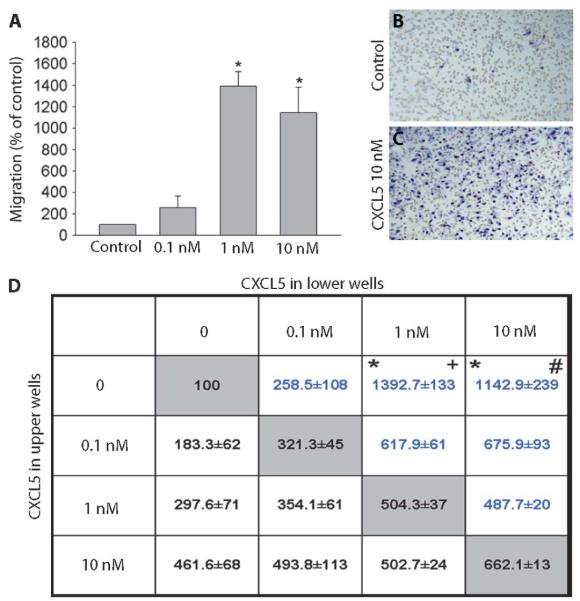Fig. 7.
CXCL5 attracts cultured peritoneal macrophages. (A) When compared to control, 1 and 10 nM CXCL5 significantly increased the migration of macrophages (Kruskal-Wallis one-way ANOVA on ranks, n = 3 to 5).(B and C) Counterstained filters show cells in a control well (B) and a well containing CXCL5 (10 ng/ml) (C). (D) To test whether CXCL5 induces migration through a gradient (chemotaxis) or solely random nondirectional migration (chemokinesis), we used the checkerboard analysis. In a Boyden chamber, cells were suspended in increasing concentrations of CXCL5 and allowed to migrate toward increasing concentrations of CXCL5 in the lower wells. The gray boxes show the results obtained when the same concentration was used in both wells (no gradient). When there is an increasing gradient, migration is further enhanced, indicating that CXCL5 induces directional chemoattraction on macrophages (Kruskal-Wallis one-way ANOVA on ranks, n = 3 to 5). Significant migration across a gradient versus migration when the concentration is the same. *P < 0.05 compared to 0 versus 0 nM; +P < 0.05 compared to 1 versus 1 nM; #P < 0.05 compared to 10 versus 10 nM. All data are presented as the means ± SEM.

